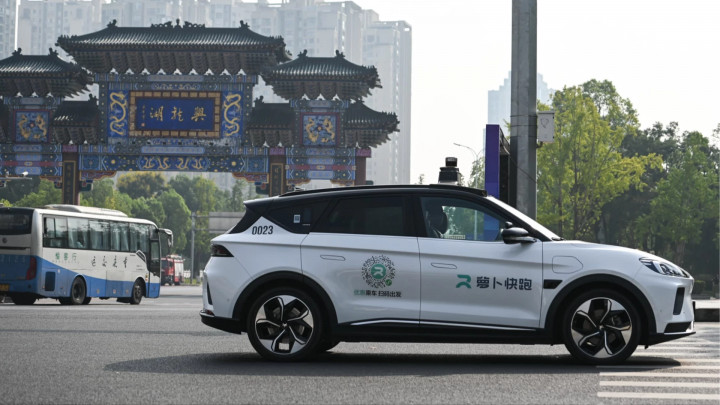Swarm Intelligence: Nature-Inspired Solutions for Complex Problems
In the realms of artificial intelligence and robotics, one of the most exciting and increasingly researched areas is Swarm Intelligence (SI). This approach draws inspiration from collective behavioral patterns observed in nature, such as those exhibited by ants, bees, fish schools, or flocks of birds. The objective is to learn from these natural systems to develop artificial systems capable of efficiently performing complex tasks in a decentralized, self-organizing manner, often leading to surprisingly sophisticated *emergent behavior* from simple individual rules.

Research and application of Swarm Intelligence are gaining significant traction in the technology industry, opening new avenues for solving complex problems.
The concept of Swarm Intelligence refers to systems where large groups of relatively simple agents collaborate, following basic rules, to solve complex problems collectively. These systems typically lack centralized control; the collective behavior arises purely from the local interactions between individuals and their environment. For instance, an ant colony finds the shortest path to a food source because individual ants react to their immediate surroundings and communicate indirectly by marking paths with pheromones – a process known as *stigmergy*.
One of the key advantages of Swarm Intelligence is the inherent robustness and flexibility of the system. Since there's no central controller, the system isn't dependent on any single unit. If individual agents fail or are destroyed, the overall system can often continue to function effectively, adapting to the loss.
Application Areas
Robot Swarms and Autonomous Systems
A prominent application of SI is the development of robot swarms. Here, small, autonomous robots work together towards a common goal, such as search and rescue operations covering large areas, environmental monitoring (e.g., mapping pollution), cooperative construction, or precision agriculture. The advantage of robot swarms lies in their ability to quickly and efficiently adapt to changing environments and solve problems rapidly through information exchange (direct or indirect) among swarm members.
Data Processing and Optimization
Swarm Intelligence methods are widely used in optimization and data processing tasks. For example:
- Particle Swarm Optimization (PSO) is a popular optimization technique used for navigating large, complex search spaces. It models the movement of individuals (particles) in the search space, converging towards an optimal solution through interactions based on individual and collective best-found positions.
- Ant Colony Optimization (ACO) is another powerful SI algorithm inspired by the foraging behavior of ants. It excels at finding optimal paths in graphs and is frequently applied to routing problems (like the Traveling Salesperson Problem) and scheduling tasks.
These algorithms are valuable tools for tackling complex optimization challenges in engineering, logistics, finance, and machine learning model tuning.
Logistics and Transportation
In logistics systems, Swarm Intelligence principles, particularly those underpinning ACO, can help optimize route planning and traffic management. A decentralized approach allows for continuous, real-time optimization of traffic flow based on local conditions, potentially making transportation systems more efficient and reducing congestion.
Challenges of Swarm Intelligence
Despite its numerous advantages, Swarm Intelligence also presents significant challenges:
- Design Complexity: Designing the simple local rules for individual agents that reliably lead to the desired complex global behavior (the "micro-macro link") can be extremely difficult and often requires extensive tuning and experimentation.
- Scalability and Communication: While often scalable in principle, managing communication (bandwidth limitations, latency) and coordination in very large swarms, especially in real-time applications, can become complex and potentially limit efficiency.
- Predictability and Control: The emergent nature of SI can make the system's global behavior difficult to predict precisely or control accurately, which can be a drawback in safety-critical applications where guarantees are needed.
- Testing and Validation: Rigorously testing and validating the behavior of large-scale swarms composed of autonomous agents in diverse and dynamic environments is a complex undertaking.
- Ethical Considerations: The deployment of autonomous swarms, particularly in areas like surveillance or defense, raises important ethical questions regarding accountability and control.
Future Prospects
Swarm Intelligence is a continuously evolving field garnering increasing attention in both academic research and industrial applications. With further advancements in artificial intelligence, sensor technology, and robotics hardware, new application areas are expected to emerge. We can anticipate significant progress in decentralized systems like sophisticated robot swarms, more powerful optimization algorithms, and smarter logistics and transportation solutions in the coming years.
A major question for the future will be how to safely, reliably, and ethically integrate these powerful swarm systems into our daily lives and critical infrastructures to help solve real-world problems effectively.
Conclusion
Swarm Intelligence represents one of the most exciting and promising frontiers in modern technology. By applying nature-inspired principles of collective behavior, it enables the creation of efficient, robust, and flexible complex systems. The research and development in this area are poised to significantly impact future technological solutions, opening new dimensions for the application of artificial intelligence and autonomous systems.





